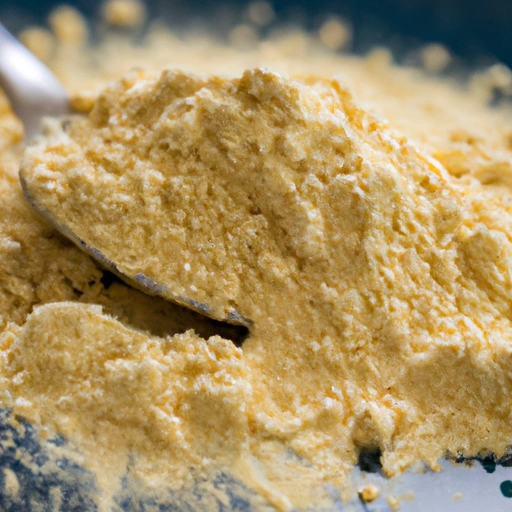Besan
Description

Besan, also known as gram flour or chickpea flour, is a fine powder made by grinding dried chickpeas. Rich in protein and gluten-free, it is an excellent alternative to wheat flour and a staple ingredient in South Asian, Middle Eastern, and Mediterranean cuisines. Besan is remarkably versatile and can be used in both sweet and savory dishes. It is often used to make batters, as a thickener in soups and sauces, and as a base for traditional dishes like falafel and hummus.
Common uses
Besan is commonly used to make flatbreads, pancakes, and fritters. It serves as the primary ingredient in many vegetarian and vegan dishes, providing a protein-rich alternative to meat. Due to its binding properties, besan is also used in making plant-based burgers and meatballs, and as a coating for deep-fried vegetables, fish, or meats.
Nutritional value
Calories
Approximately 356 calories per 100 grams (3.5 oz / about 0.75 American cups).
Protein
About 22 grams of protein per 100 grams (3.5 oz / about 0.75 American cups).
Fat
Approximately 6 grams of fat per 100 grams (3.5 oz / about 0.75 American cups).
Carbohydrates
Around 58 grams of carbohydrates per 100 grams (3.5 oz / about 0.75 American cups).
Vitamins
Contains B-vitamins, including folate and thiamine.
Minerals
Rich in minerals such as iron, magnesium, phosphorus, potassium, and zinc.
Health benefits
Besan is a nutritious food ingredient that can contribute to a balanced diet. Its high protein content makes it popular among vegetarians and vegans. Being gluten-free, it's also suitable for people with celiac disease or gluten intolerance. The fiber content in besan can aid in digestion and help regulate blood sugar levels. Additionally, the various vitamins and minerals present in besan support overall health and well-being.
Potential risks
While besan is generally considered safe for consumption, individuals with a chickpea allergy should avoid it. Overconsumption may lead to digestive discomfort due to its high fiber content. As with any food, moderation is key.
Common recipes
Besan is used in numerous recipes such as Indian pakoras, bhajis, dhokla, Middle Eastern falafel, French socca, Italian farinata, and more.
Cooking methods
It can be roasted, fried, baked, or used as a thickening agent in gravies and soups.
Pairing with other ingredients
Besan pairs well with spices like turmeric, cumin, and coriander, as well as vegetables such as spinach, onions, and potatoes.
Summary
Besan, with its diverse applications and numerous health benefits, is a highly esteemed ingredient in many cultural cuisines across the globe. Its adaptability in various recipes makes it an essential pantry item for those seeking gluten-free options or looking to incorporate more plant-based protein into their diets.